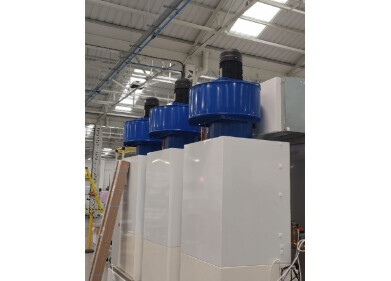Laboratory Products
How Can Electron Microscopy Help with Allergies?
Mar 25 2020
In an exciting leap forward for public health, researchers from Aarhus University have used electron microscopy to map the structure of an antibody type known as IgE, a key molecule in allergic diseases. The collaborative study was conducted by the Department of Engineering and the Department of Molecular Biology and Genetics, with the team describing not only the overall structure of the IgE antibody that's responsible for allergic diseases, but also its mode of action.
Mapping the mechanisms of allergic diseases
The findings were published in the journal Allergy, with the team explaining how the scientific breakthrough offers new insight into the mechanisms of allergic diseases and the three-dimensional structure of antibodies. Michaela Miehe and Rasmus K Jensen, two scientists involved in the study, also hope the research can be used to develop new medicines and treatments.
"For the first time, we could show that IgE antibodies are unique and are violating the dogma of antibody flexibility," says Jensen. "My work with electron microscopy demonstrated directly that IgE is a highly rigid molecule with a defined architecture of the allergen-binding moieties, which is different from the behavior of the other antibody isotypes we know."
Harnessing the power of a therapeutic antibody
The team also explored the structural and functional impact of a therapeutic antibody that binds to IgE and has the potential to prevent allergic diseases. It's currently being tested in clinical trials, with Associate Professor Edzard Spillner explaining, "Our new results describe the structural changes that IgE undergoes when neutralized by this anti-IgE antibody. This also allows us to understand better, how IgE recognizes allergens and the two IgE receptors sitting on the surface of the immune cells we have in our body."
Currently, allergic diseases affect more than one billion people around the world. By 2050, experts warn this figure could reach four billion. Studies such as this will play a critical role in safeguarding the global population against allergic diseases and improving public health. "We now understand much better and in much more detail the IgE molecule that we want to control and the way it behaves upon treatment of patients with allergy medicine. This also allows us to envision new strategies for developing medicine of the future," says Spillner.
From developing new treatments for allergic diseases to combating the global COVID-19 pandemic, science is at the forefront of public health. For frontline information on how health experts are working to flatten the curve and limit the spread of COVID-19, don't miss 'Ways to tackle the spread of coronavirus using viricidal surface decontamination.'
Digital Edition
Lab Asia 31.2 April 2024
April 2024
In This Edition Chromatography Articles - Approaches to troubleshooting an SPE method for the analysis of oligonucleotides (pt i) - High-precision liquid flow processes demand full fluidic c...
View all digital editions
Events
Apr 22 2024 Marrakech, Morroco
Making Pharmaceuticals Exhibition & Conference
Apr 23 2024 Coventry, UK
Apr 23 2024 Kintex, South Korea
Apr 23 2024 Seoul, South Korea
Apr 24 2024 Jakarta, Indonesia
.jpg)
.jpg)






.jpg)









